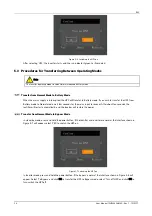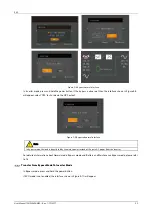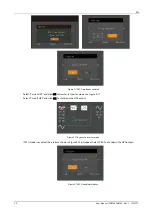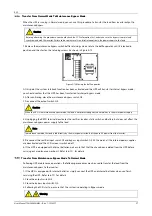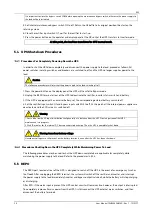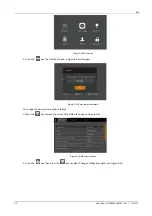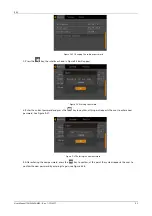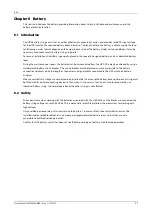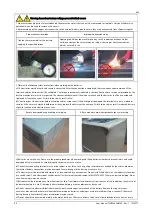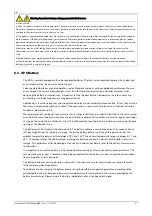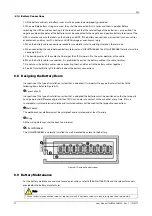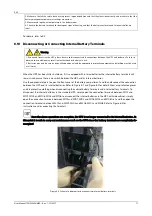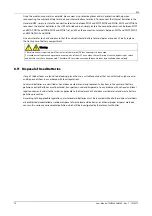
EXS
User Manual 10H52260UM60 - Rev. 1 - 10/2017
67
Warning: hazardous battery voltage present behind covers
may be caused.
i) Clean the battery enclosure with a damp cloth. To avoid any static or arcing, do not use dry cloths or dusters to clean the batteries.
Do not use the organic solvents (such as thinners, gasoline, volatile oil) to clean the batteries. Otherwise, the battery enclosure may be
cracked. In the worst case this may even result in fires.
j) The batteries contain diluted sulphuric acid. In normal use, the diluted sulphuric acid will be absorbed by the battery baffle and polar
plate. However, if the battery is damaged, it may leak acid. Therefore, personal protective equipment (e.g., protective glasses, rubber
gloves and apron) must be used when working with batteries. Failure to observe the above may result in blindness, if the sulphuric acid
comes into contact with the eyes, or burns, if it comes into contact with the skin.
k) batteries may be a affected by short circuits, electrolyte dry-up or positive pole erosion failure at the end of their service life.
Continued use it this state may result in thermal runaway, bulging or liquid leakage. Please replace the batteries before they reach this
state.
l) Before connecting or disconnecting the battery connection cables, please isolate them from the battery charger terminals.
m) Check whether the battery has been unexpectedly earthed. If so, remove the earth connection. Contact with any part of the earthed
battery may result in an electric shock.
6.3
UPS Battery
The UPS is normally equipped with valve-regulated batteries. The term 'valve-regulated' replaces the 'sealed type'
or 'maintenance free', which were used in the past.
Valve-regulated batteries are not completely sealed, therefore some gas will be expelled especially when they are
over-charged. The volume of expelled gas is less than that for water injection type batteries. However, when
designing the battery installation area, it important to take the possibility of temperature rise into account and
ensure there is sufficient space to ensure good ventilation.
Additionally, it is worth noting that valve-regulated batteries are not entirely maintenance free. In fact, they must be
kept clean, and inspected regularly to check if the connection is secure and the terminals are free from corrosion.
For details, please refer to 6.9 .
We recommend that you do not connect more than 4 strings of batteries in parallel. All batteries in the same system
must be of the same type, brand, capacity and age. Failure to observe this condition will result in regular over/under
charging of certain batteries within the string. This will eventually lead to premature failure, compromising the back-
up time of the affected string.
The battery must be stored in fully charged state. The battery will lose a certain proportion of its capacity due to
self-discharge during the shipping or storage. Charge the battery before use. During storage, ensure that the
ambient temperature remains within between -15°C and +45°C; the optimal temperature range is between 20°C and
25°C. To compensate for the self-discharge, recharge the battery once every 3 months during while it remains in
storage. This period may differ, depending on the specific batteries. For details, refer to the battery manufacturer’s
specifications.
It is important to ensure the battery is fully charged before carrying out the on site battery backup time test. This
test may take several days. Therefore, it should be conducted after the battery has been subject to uninterrupted
float charging for at least one week.
The battery performance will gradually increase after it has been running for several weeks or subject to two to
three charge and discharge cycles.
To avoid over/under-charging the battery, please set-up the battery management parameters according to the
equalizing/float charge voltage and temperature compensation factor specified in the manuals provided by the
battery manufacturer. Please charge the battery immediately after is has been discharged.


